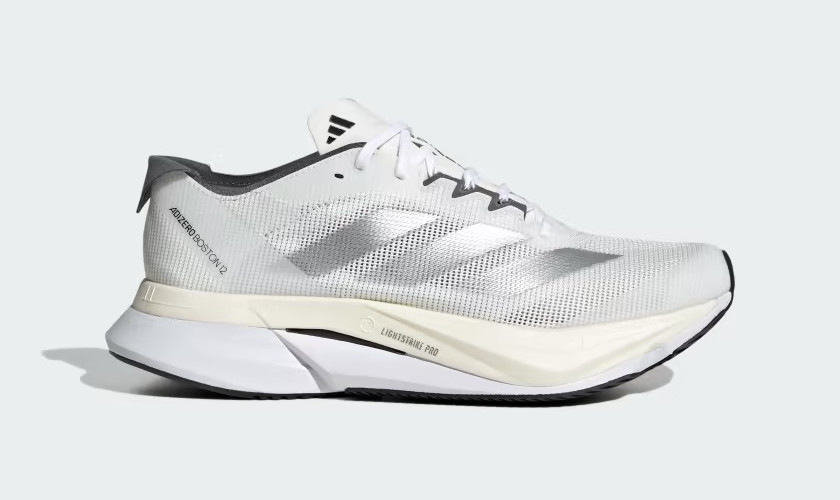Chasing Records: The adidas Adizero Chronicles
- theoutdoorwall
- Nov 7, 2023
- 6 min read
In the last 15 years, the adidas Adizero franchise became a synonym for elite performance, world records, and speed.

Numbers don’t tell the full story most of the time, but let’s start from them anyway. 8 World Championship titles. 2 broken world records. 50% of all Major Marathons won. All in 2022. This is how dominant Adizero athletes are in the world of running. In the past 14 years, 150 times the winner of a major race wore a pair of Adizeros. The Three-Stripes franchise ascended the running shoes Olympus since its early days in 2008 and this year new releases have already been defined as the ultimate shoes to run your PBs.
“When I wear an Adizero shoe, I know that nothing is impossible.” Evans Chebet, 2x Boston Marathon winner, 1x New York Marathon winner
The genesis of the Adizero started way before the first time we saw an official race. Back in the early 2000s, the adidas running department started to experiment with a new form of technology able to diminish the waste of energy generated by the foot touching the ground: carbon fiber. What has become a frequent buzzword when talking about road running shoes, and slowly trail running shoes as well, back then was still confined to research labs. At the time, The German brand was able to incorporate carbon fiber in the adistar but it proved to be too expansive and difficult to work with so decided to move on. As it often happens, new groundbreaking technologies can be unsuccessful in their first appliances.
This left adidas with an unsolved problem: how to design the next record-breaking performance running shoe? The brand decided to tap into the Japanese running knowledge. In 2004, Mr. Toshiaki Omori was assigned the task of creating a new shoe versatile and adaptable to any running conditions an athlete could face. From repeats on the track to tempo runs and treadmill interval sessions. And it needed to look fast, no matter the pace you are running. He refused to use digital tools and stuck to the old design method based on molds of real feet. This approach allowed him to create the best fit possible for athletes’ feet. The process took him and the adidas team 4 years, but in September 2008 they were ready to hit the road and change running forever.

By September 2008, Haile Gebrselassie had already won the 10,000 meters Olympic Games and the World Championships titles multiple times and since 2005 he fully switched his career to the marathon distance. In the span of 3 years he won the London Marathon once and the Berlin Marathon twice, setting the world record in 2007 (2:04:26). On the night of the 27th of September, the day before the 2008 Berlin Marathon, in his hotel room the Ethiopian laced the first Adizero Adios prototype. He went for a casual stroll down the hotel corridor to get the feeling of the shoe. He loved it and decided to use it the day after.
The next day, he broke the world record by 29 seconds, with an incredible 2.03.59. he became the first man to win the marathon three times in a row. That day marked the peak of Gebrselassie’s career and the beginning of the Adizero franchise.

adidas wanted to create a franchise with a product for all the running levels. The design team leveraged pro athletes in the product development process with the objective of providing the best performance to all runners. “The Adizero democratized speed for the masses”, is how adidas refers to its own product. The Adizero is the toolbox franchise for the brand where you can find anything you need: adios Pro is built for half marathons and marathons, Takumi-Sen works the best on 5K and 10K, Boston is the training version of the Adios Pro, Prime X is the IAAF-unapproved shoe that can deliver your PB, the newest Adios Pro Evo 1 promises to be the best possible performance shoe weighing only 138 grams.
As we read through the research documents for this article, we faced a philosophical topic about the Prime X. The shoe is advertised as the shoe that can make you achieve your PBs. At the same time, the Prime X has a 50mm drop, 10mm more than what IAAF allows in its events; for this, Ethiopian Derara Hurisa was retroactively disqualified after winning the Wien Marathon for wearing the shoe in 2021. Does it make sense for a runner to use it to set a PB? For us, it is a No but the debate remains open.
If Gebrselassie had his best performance in 2008, marathoners keep getting faster and closer to the 2-hour mark. Not just athletes were chasing the time mark, brands too. Nike and adidas engaged in another battle for footwear supremacy. Contrary to Nike, adidas raised the bar even higher by committing to beat the record in an official race.

In 2014, the Ethiopian Dennis Kipruto Kimetto broke the world record at the Berlin Marathon (2:02:57) wearing the Adizero Adios Boost 2. The shoe featured the innovative Boost technology that improved running economy by one percent while reducing the weight of the shoe by 100 grams. Despite the technology enhancement, Boost was still relatively heavy. On the back of Kimetto’s performance, adidas started to develop the Adizero Sub 2 in 2015.
Boost became Boost Light. The outsole adopted Continental Microweb, reducing foot slippage by one millimeter with each stride. The shoe only weighed 156 grams and was ready for the first attempt. In 2017, Kenyan Wilson Kipsang Kiprotich ran the first 30k of the Tokyo Marathon on pace to break the 2-hour mark before slowing down. He finished at 2:03:58 breaking the course break. A few months later, Nike and adidas went head to head in Berlin: Eliud Kipchoge vs. Wilson Kipsang Kiprotich. Kipsang dropped after 30k, leaving the ground to Kipchoge to win the race (2:03:32) ahead of Ethiopian Guye Adola wearing Adizero sub 2. Nike won the battle but the war was still on.

The runners faced each other again in 2018, always in Berlin, and Kipchoge scored an even bigger victory this time. He set the new World Record at 2:01:39, while Kipsang stopped the clock at 2:06:48. We can speculate that this loss caused Adidas to re-think its approach to Adizero top-tier shoes. In 2019, the Adizero Pro came out featuring a lower profile compared to the competition and both Boost and Lightstrike technologies. But it wasn’t enough and pushed the brand to develop something new.

Almost 20 years after the first experiments, adidas decided to adopt carbon fiber playing by its own rules. The Adizero Adios Pro features a new application of carbon fiber: EnergyRods. Instead of a carbon-fiber plate, adidas developed energy rods that can be individually adjusted to a higher or lower vertical position to provide the best performance possible and more flexibility during the design process. As a result of hundreds of prototypes, the five carbon-infused rods mimic the metatarsal bones of the foot. The shoe also features a carbon plate in the heel and LightstrikePro, significantly lighter compared to Boost. The entire package weighs 225 grams. All the elements of the shoe are designed to improve athletes’ performance.

I was exhausted for the last five kilometers, but the new shoes have helped me set a record. Peres Jepchirchir, 1x Marathon Olympic Gold Medal, 2x Half Marathon World Champion
Early results from athletes were encouraging. Peres Jepchirchir broke the female Half marathon world record in 2020 at the World Championships in Gdynia (65:34), then Kibiwott Kandie set the male world record on the same distance one year later in Valencia (57:32). 2022 went on to be a dominant year for Adizero: 8 World Championship titles. 2 broken world records. 50% of all Major Marathons won - and 2021 already looked pretty much like that. On its first race, the Adizero Adios Pro Evo 1 helped Tigist Assefa to break the female world record running 2:11:53 at the 2023 Berlin Marathon.

Even though Kipchoge was able to run sub-2 in 2019, the quest to sub-2 in an official event is still on. Nike and adidas continue to face themselves in this race that reminds them of the Space Race between the US and URSS during the Cold War. Which will be the first shoe to go sub-2? Nike or adidas? Alphafly or Adizero?













Comments